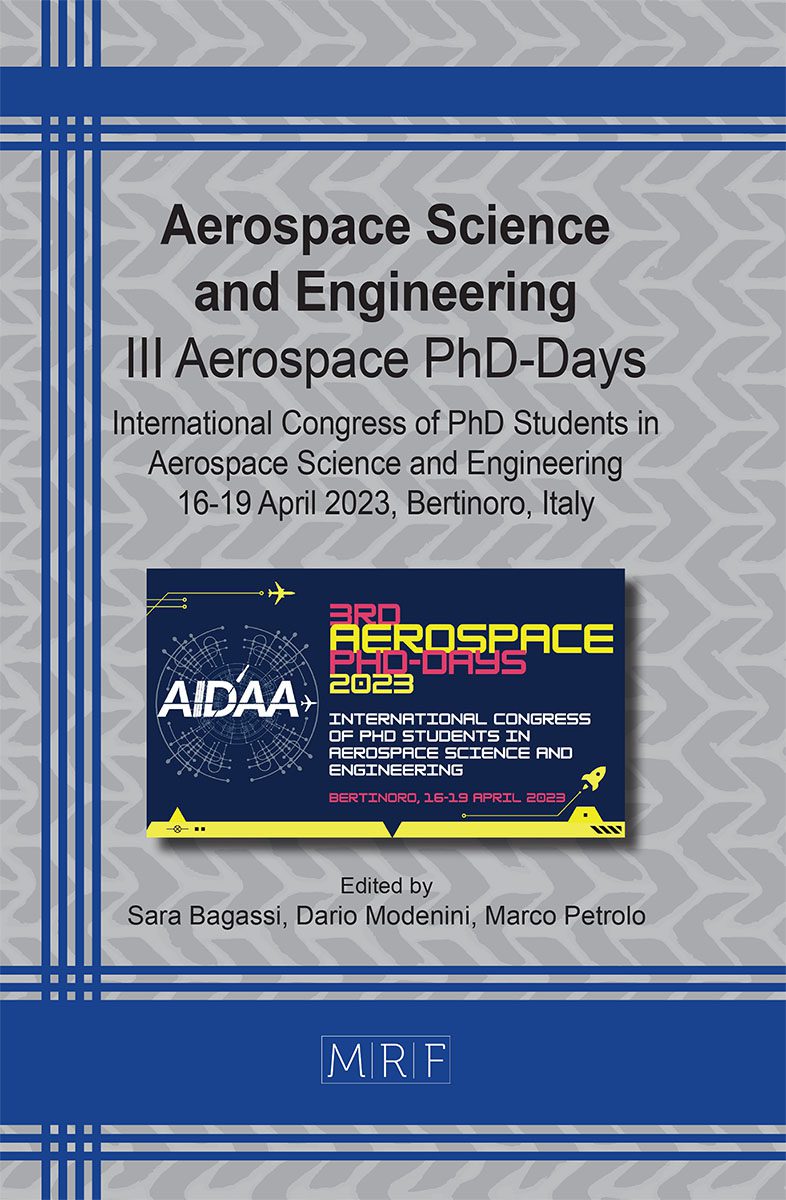Design of an orbit determination computer for AI autonomous navigation
Aurel Zeqaj
download PDFAbstract. In the context of the growing demand for autonomous navigation solutions able to reduce the cost of a space mission, the DeepNav project, financed by ASI, has the objective to develop a navigation subsystem relaying solely on the use of onboard assets, e.g. optical images, artificial intelligence algorithms and an Extended Kalman Filter, to perform the navigation of a CubeSat around minor celestial bodies. This manuscript describes the work performed at University of Bologna in the context of the project, in particular for the development of an orbit determination computer, which uses an estimation filter to reconstruct the trajectory of the spacecraft taking as input the optical observables previously processed by the artificial intelligence algorithms.
Keywords
EKF, DeepNav, Navigation, Autonomous
Published online 9/1/2023, 7 pages
Copyright © 2023 by the author(s)
Published under license by Materials Research Forum LLC., Millersville PA, USA
Citation: Aurel Zeqaj, Design of an orbit determination computer for AI autonomous navigation, Materials Research Proceedings, Vol. 33, pp 262-268, 2023
DOI: https://doi.org/10.21741/9781644902677-38
The article was published as article 38 of the book Aerospace Science and Engineering
![]() Content from this work may be used under the terms of the Creative Commons Attribution 3.0 license. Any further distribution of this work must maintain attribution to the author(s) and the title of the work, journal citation and DOI.
Content from this work may be used under the terms of the Creative Commons Attribution 3.0 license. Any further distribution of this work must maintain attribution to the author(s) and the title of the work, journal citation and DOI.
References
[1] R. Lasagni Manghi, M. Zannoni, and P. Tortora, An autonomous optical navigation filter for a CubeSat mission to a binary asteroid system, presented at the IEEE International Workshop on Metrology for AeroSpace, MetroAeroSpace, 2019, pp. 116-120.
[2] E. Turan, S. Speretta, and E. Gill, Autonomous navigation for deep space small satellites: Scientific and technological advances, Acta Astronautica, vol. 193, pp. 56-74, Apr. 2022, doi: 10.1016/j.actaastro.2021.12.030. https://doi.org/10.1016/j.actaastro.2021.12.030
[3] V. Franzese, F. Topputo, F. Ankersen, and R. Walker, Deep-Space Optical Navigation for M-ARGO Mission, J Astronaut Sci, vol. 68, no. 4, pp. 1034-1055, Dec. 2021, doi: 10.1007/s40295-021-00286-9. https://doi.org/10.1007/s40295-021-00286-9
[4] E. Dotto et al., LICIACube – The Light Italian Cubesat for Imaging of Asteroids In support of the NASA DART mission towards asteroid (65803) Didymos, Planetary and Space Science, vol. 199, p. 105185, May 2021, doi: 10.1016/j.pss.2021.105185. https://doi.org/10.1016/j.pss.2021.105185
[5] R. Lasagni Manghi, D. Modenini, M. Zannoni, and P. Tortora, Measuring the mass of a main belt comet: Proteus mission, in Proceedings of the International Astronautical Congress, Oct. 2018. https://doi.org/10.1109/MetroAeroSpace.2019.8869616
[6] E. Gramigna et al., Hera Inter-Satellite link Doppler characterization for Didymos Gravity Science experiments, presented at the 2022 IEEE 9th International Workshop on Metrology for AeroSpace, 2022, pp. 430-435. https://doi.org/10.1109/MetroAeroSpace54187.2022.9856049
[7] C. Buonagura et al., Deep Learning for Navigation of Small Satellites about Asteroids: an Introduction to the DeepNav Project, presented at the 2nd International Conference on Applied Intelligence and Informatics, Sep. 2022. https://doi.org/10.1007/978-3-031-25755-1_17
[8] H. Demura et al., Pole and Global Shape of 25143 Itokawa, Science, vol. 312, no. 5778, pp. 1347-1349, Jun. 2006, doi: 10.1126/science.1126574. https://doi.org/10.1126/science.1126574
[9] D. J. Scheeres et al., Heterogeneous mass distribution of the rubble-pile asteroid (101955) Bennu, Sci. Adv., vol. 6, no. 41, p. eabc3350, Oct. 2020, doi: 10.1126/sciadv.abc3350. https://doi.org/10.1126/sciadv.abc3350
[10] D. J. Scheeres et al., The dynamic geophysical environment of (101955) Bennu based on OSIRIS-REx measurements, Nat Astron, vol. 3, no. 4, pp. 352-361, Mar. 2019, doi: 10.1038/s41550-019-0721-3. https://doi.org/10.1038/s41550-019-0721-3
[11] D. A. Vallado and W. D. McClain, Fundamentals of astrodynamics and applications, 3. ed., 1. printing. Hawthorne, Calif.: Microcosm Press [u.a.], 2007. https://doi.org/10.1016/S1874-9305(07)80003-3
[12] O. Montenbruck and E. Gill, Satellite orbits: models, methods, and applications: with … 47 tables, 1. ed., corr. 3. printing. Berlin Heidelberg: Springer, 2005.
[13] B. D. Tapley, B. E. Schutz, and G. H. Born, Statistical orbit determination. Amsterdam ; Boston: Elsevier Academic Press, 2004. https://doi.org/10.1016/B978-012683630-1/50020-5












